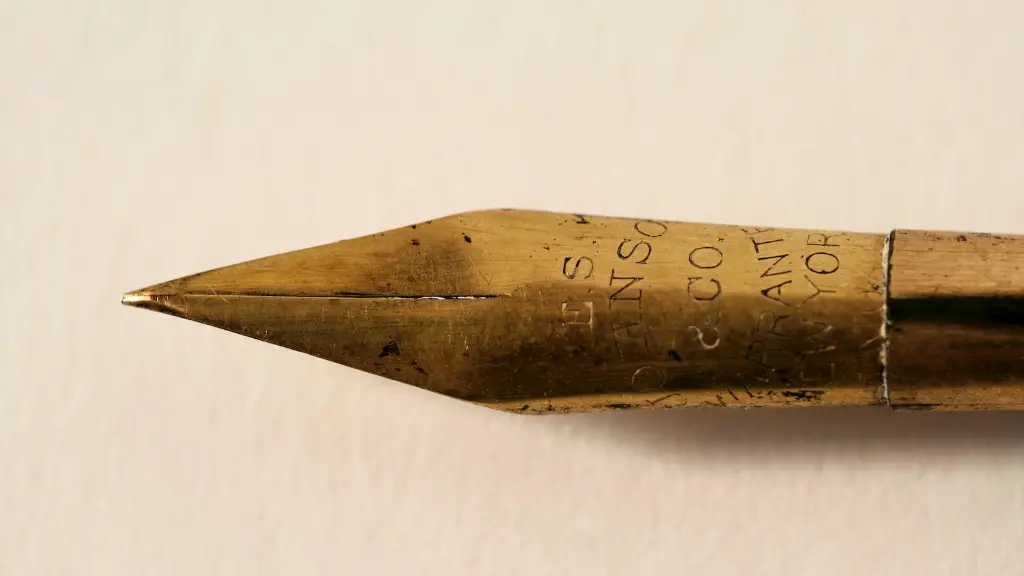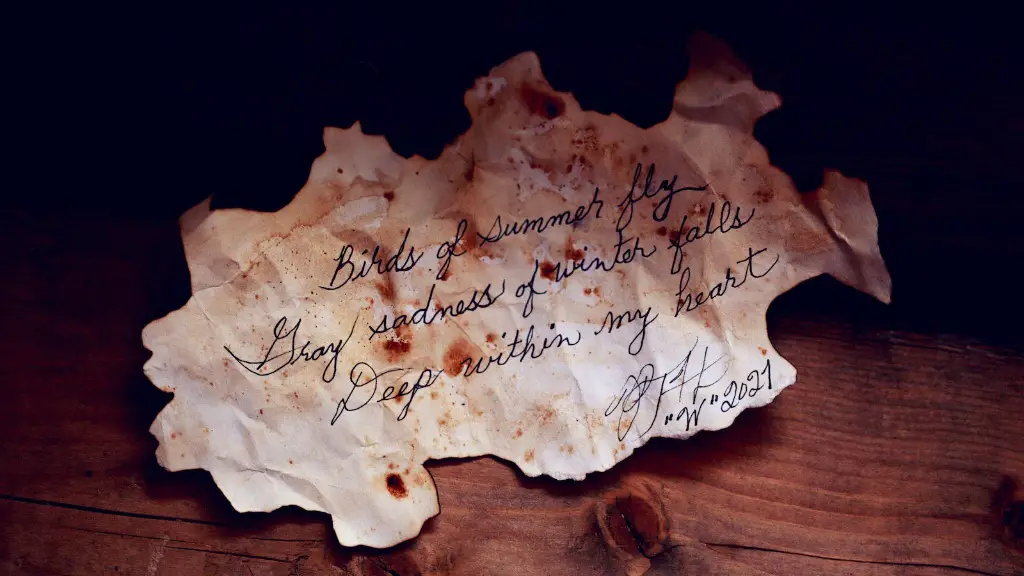Background Information
Lyric poetry is a type of poem that expresses the thoughts and feelings of the poet. It is often written in the first person and conveys the poet’s emotional state. There is no strict form or structure to lyric poetry and it can be free-flowing and unstructured, or it can have a specific rhythm and rhyme scheme. The most common feature of lyric poetry is the use of figurative language, such as similes and metaphors, to emphasize certain emotions or ideas.
Identifying Features of Lyric Poetry
When trying to identify lyric poetry, there are certain features to look out for. A poem can be classified as a lyric poem if it has any of the following characteristics:
- Personal Expression: Lyric poetry is often written in the first person and conveys the poet’s emotions and thoughts. It is usually quite emotive and emphasizes certain feelings or ideas.
- Figurative Language: Lyric poetry makes use of figurative language such as similes, metaphors, and alliteration to emphasize certain emotions or ideas.
- Conversational Tone: Lyric poetry often has a conversational tone and can be written in a colloquial, everyday style.
- Thoughtful Reflections: Lyric poetry often expresses the poet’s more thoughtful reflection on life. It is often introspective and explores the inner thoughts and feelings of the poet.
- Character Focus: Lyric poetry often focuses on the character or story of a person, usually exploring their emotions and inner thoughts.
- Rhythm and Rhyme: Lyric poetry does not have to have a specific form or structure, but it can have a particular rhythm and rhyme scheme.
Examples of Lyric Poetry
Many famous poets have written lyric poetry, some of the most famous being William Wordsworth, Emily Dickinson, and Robert Frost. Here are some examples of lyric poetry:
William Wordsworth, “The Solitary Reaper”
“Behold her, single in the field,
Yon solitary Highland Lass!
Reaping and singing by herself;
Stop here, or gently pass!
Alone she cuts and binds the grain,
And sings a melancholy strain;
O listen! for the Vale profound
Is overflowing with the sound”.
Emily Dickinson, “Hope is the Thing with Feathers”
“Hope is the thing with feathers –
That perches in the soul –
And sings the tune without the words –
And never stops – at all –
And sweetest – in the Gale – is heard –
And sore must be the storm –
That could abash the little Bird
That kept so many warm – ”
Robert Frost, “Stopping by Woods on a Snowy Evening”
“Whose woods these are I think I know.
His house is in the village though;
He will not see me stopping here
To watch his woods fill up with snow.
My little horse must think it queer
To stop without a farmhouse near
Between the woods and frozen lake
The darkest evening of the year.”
Lyric Poetry in Music
Lyric poetry is also the basis for many popular songs and the music industry is full of lyric poets. Many of the most successful musicians have used lyric poetry to express themselves and their emotions. Lyric poetry can be written to any type of music, from rap to rock and everything in between.
The Benefits of Lyric Poetry
Writing lyric poetry can be beneficial for many different reasons. It can help us to express our feelings, release our emotions, practice creativity and even help us to think more deeply about our lives. It can also help us to develop our writing skills as we experiment with different forms and techniques. Writing lyric poetry can also be therapeutic as it offers an outlet to explore our thoughts and emotions.
Uses of Lyric Poetry
Lyric poetry can be used in many different ways. It can be used as a form of self-expression, a way to explore our emotions and inner thoughts, a form of creative writing, or even as a tool to develop our writing skills. It can also be used to offer insight into topics or current issues and can help to stimulate conversations and debate.
The Future of Lyric Poetry
It is clear that lyric poetry is here to stay, as it has been used by poets and musicians for centuries. We have seen its evolution over time and the emergence of new forms, such as rap and spoken word poetry. It seems that lyric poetry is becoming increasingly popular and more accessible thanks to the internet, which allows us to access a wide range of lyric poets and their work.
Conclusion
Lyric poetry is an ancient and powerful way to express our thoughts and emotions. It can be written in many different ways and can convey profound meaning and understanding. It can also be used to explore topics and current issues or even practice writing skills. With its popularity and accessibility increasing, lyric poetry is here to stay.


